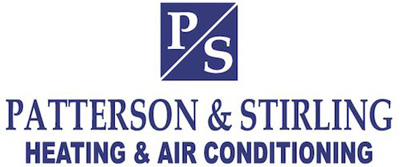
You shouldn’t have to give up comfort or empty your wallet to keep your home at a refreshing temp during summer weather.
But what is the best temp, exactly? We discuss ideas from energy experts so you can choose the best setting for your residence.
Here’s what we advise for the most energy-efficient setting for air conditioning in Erie.
Recommended Thermostat Settings for Summer
Most households find setting the thermostat at 72-73 degrees is ideal. However, if there’s a major difference between your indoor and exterior temperatures, your cooling costs will be higher.
These are our recommendations based on the U.S. Department of Energy (DOE) and ENERGY STAR®.
While at home: 78 degrees. While that sounds too high, there are ways you can keep your home refreshing without having the AC running all the time.
Keeping windows and blinds shut during the day keeps cool air where it should be—inside. Some window treatments, such as honeycomb shades or plantation shutters, are made to provide added insulation and enhanced energy savings.
If you have ceiling fans in your home, the DOE says you can move thermostat temperatures about 4 degrees hotter without sacrificing comfort. That’s because they cool through a windchill effect. Since they cool people, not rooms, shut them off when you leave a room.
If 78 degrees still feels too warm initially, try running a test for about a week. Start by increasing your thermostat to 78 degrees while you’re at your residence. Then, progressively lower it while adhering to the suggestions above. You could be astonished at how cool you feel at a higher temperature setting.
While away: 88 degrees. There’s no rationale for keeping the air conditioning going all day while your residence is empty. Switching the temp 7–10 degrees warmer can save you anywhere from 5–15% on your air conditioning expenses, according to the DOE.
When you get home, don’t be tempted to switch your thermostat below 78 to cool your residence faster. This isn’t effective and often results in a bigger cooling cost.
A programmable thermostat is a helpful way to keep your settings controlled, but you need to set programs. If you don’t use programs, you risk forgetting to increase the set temperature when you go.
If you’re looking for a hassle-free remedy, think over getting a smart thermostat. This thermostat works with with your phone, so it is aware when you’re at your residence and when you’re gone. Then it intuitively adjusts temperature settings for the best savings. How much exactly? Usually $180 yearly on heating and cooling, according to ENERGY STAR.
Another advantage of using a smart thermostat? You can use your phone to monitor and adjust temperature settings from almost anywhere.
While sleeping: Around 70 degrees. While ENERGY STAR advises 82 degrees, that could be unbearable for many families. The majority of people sleep better when their sleeping space is chilled, so that’s why the National Sleep Foundation suggests 60–67 degrees. But that may be too cold, depending on your clothing and blanket preference.
We recommend trying a similar test over a week, setting your temp higher and progressively decreasing it to determine the ideal temperature for your house. On pleasant nights, you might discover keeping windows open at night and running a ceiling fan is a superior idea than operating the air conditioner.
More Ways to Use Less Energy During Hot Weather
There are additional ways you can spend less money on cooling bills throughout the summer.
- Install an energy-efficient AC system. Central air conditioners only last about 12–15 years and lose efficiency as they age. An updated air conditioner can keep your residence more comfortable while keeping electrical expenses down.
- Set yearly air conditioner maintenance. Regular air conditioner maintenance keeps your system running like it should and might help it operate at greater efficiency. It can also help lengthen its life expectancy, since it helps techs to discover little issues before they cause a major meltdown.
- Put in new air filters regularly. Use manufacturer instructions for changing your air filter. A clogged filter can result in your system short cycling, or turn on and off too often, and raise your utility.
- Inspect attic insulation levels. Just about 90% of homes in the USA don’t have enough insulation, according to the Insulation Institute. The majority of southern climates need 13–14” of attic insulation, while northern climates need 16–18”.
- Have your ductwork inspected. Ductwork that has loosened over time can seep conditioned air into your attic, walls or crawl space. This can create major comfort troubles in your house, including hot and cold spots.
- Seal cracks, doors and windows. Keep hot air in its place by sealing cracks. You can also caulk or weather strip doors to seal more cold air indoors.
Save More Energy During Hot Weather with Patterson & Stirling
If you need to conserve more energy during warm weather, our Patterson & Stirling professionals can help. Reach us at 814-739-6977 or contact us online for more details about our energy-saving cooling solutions.



